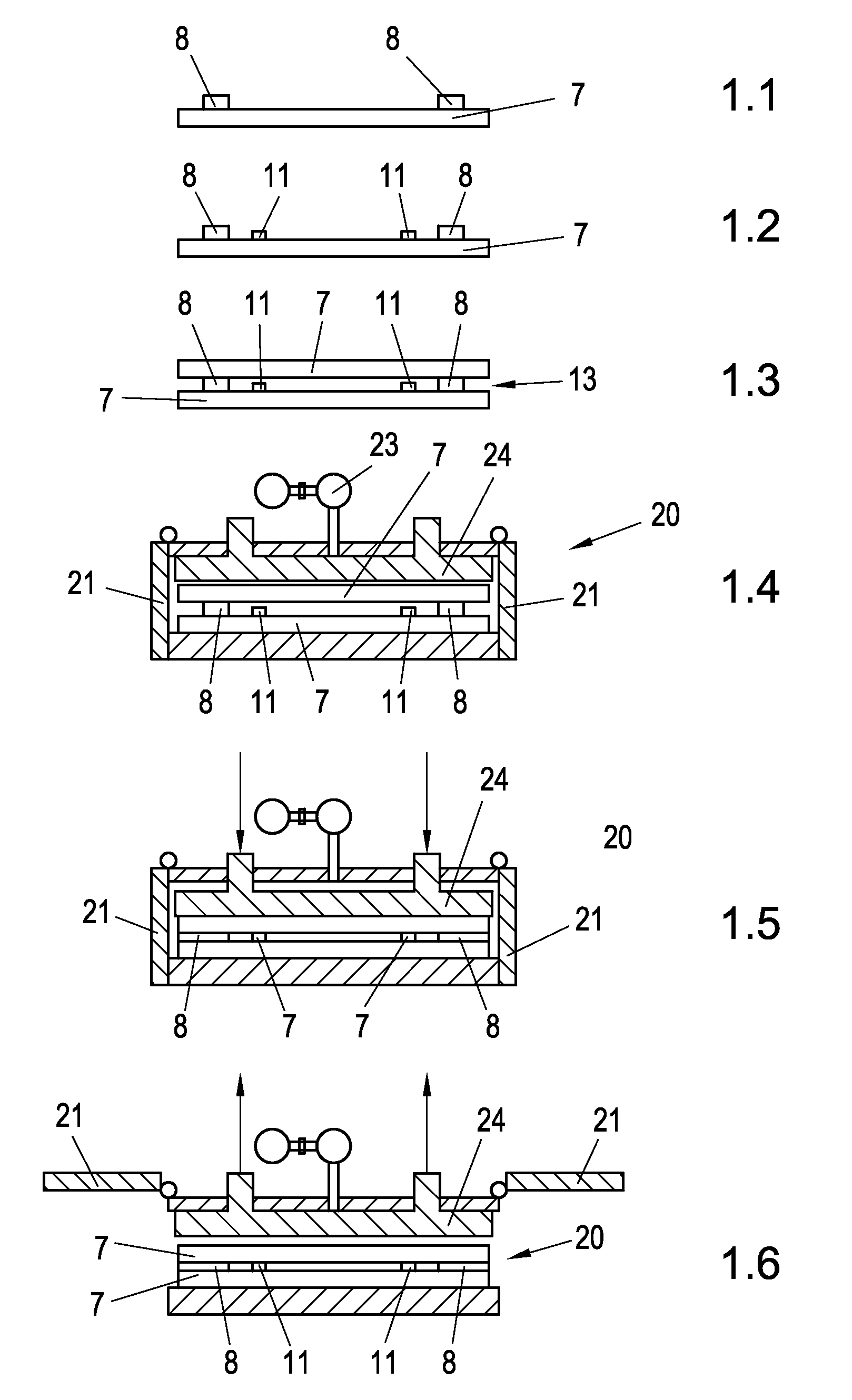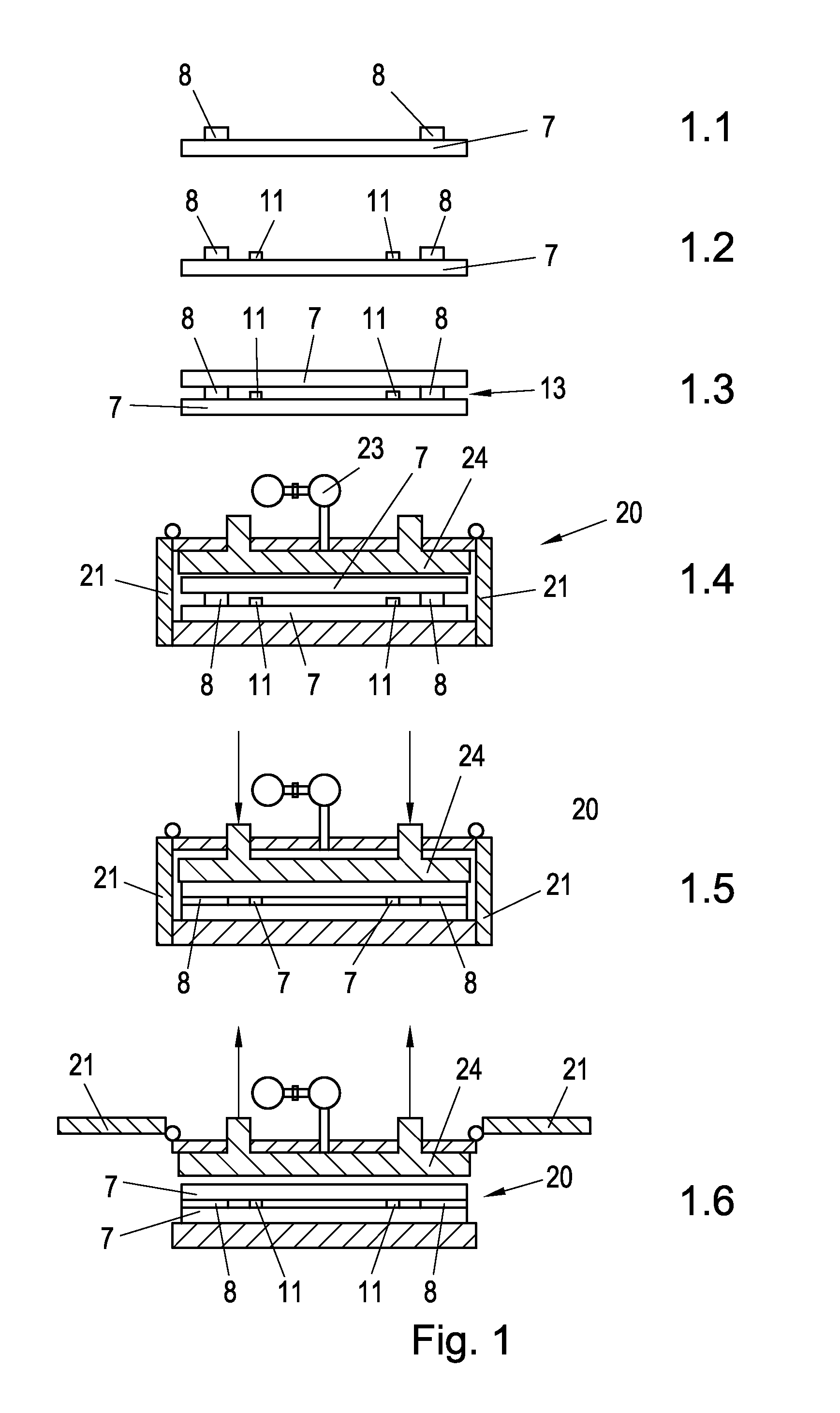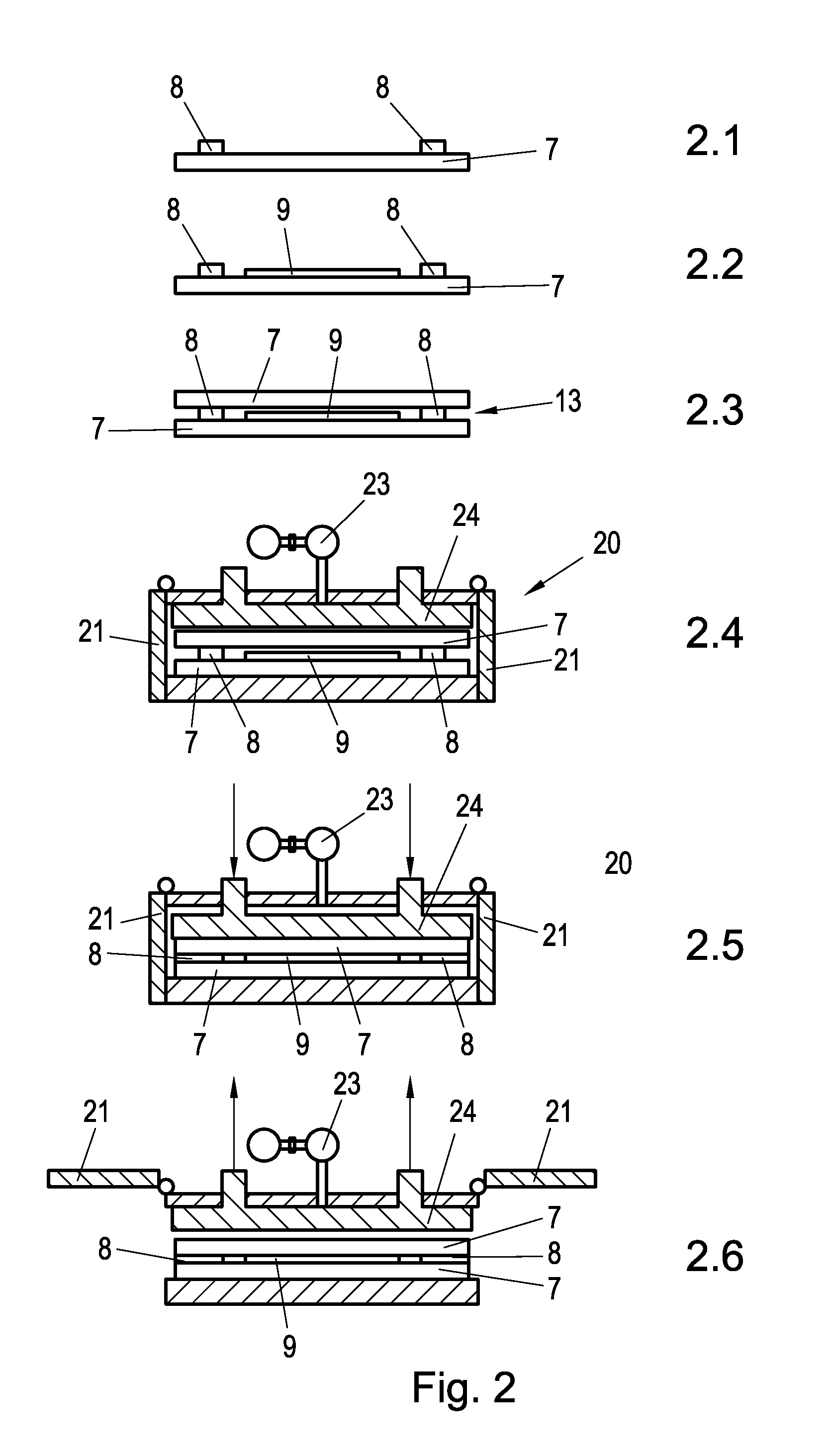Vacuum element and method for producing the same
a vacuum element and vacuum technology, applied in solar ray transmission and preventing heat radiation, pv power plants, sustainable buildings, etc., can solve the problems of time-consuming and cumbersome tasks, cumbersome and deficient, and achieve enhanced energy yield, secure connection, and the effect of avoiding or reducing disadvantageous reflections
- Summary
- Abstract
- Description
- Claims
- Application Information
AI Technical Summary
Benefits of technology
Problems solved by technology
Method used
Image
Examples
Embodiment Construction
[0020]The method shown as an example in FIG. 1 proceeds as follows:
1. Applying Diffusion-Tight Edge Coating Material (Bead 8)
[0021]A bead 8 that consists of, e.g., diffusion-tight sealing material is applied on all four sides on the edge on the surface of glass pane 7 surface (first component) in a vertical or horizontal application system. Contours or inside cutaways can also be surrounded with a bead 8 with this application system.[0022]1.1 Edge coating material 8 is applied as a bead on a glass pane 7 (first component) (FIG. 1).[0023]1.2 Edge coating material 8 is applied on an already pre-laminated 9 glass pane 7 (FIG. 2).[0024]1.3 Edge coating material 8 is applied on a coated glass pane 107 (for the production of thin-layer PV modules) (FIG. 3).
2. Fittings
[0025]Depending on the vacuum element (modular design) to be produced, various inserts (fittings) are inserted into the sealed pane manually or automatically.[0026]2.1 For vacuum glass production (empty vacuum element, i.e., ...
PUM
| Property | Measurement | Unit |
|---|---|---|
| pressure | aaaaa | aaaaa |
| height | aaaaa | aaaaa |
| thickness | aaaaa | aaaaa |
Abstract
Description
Claims
Application Information
 Login to View More
Login to View More - R&D
- Intellectual Property
- Life Sciences
- Materials
- Tech Scout
- Unparalleled Data Quality
- Higher Quality Content
- 60% Fewer Hallucinations
Browse by: Latest US Patents, China's latest patents, Technical Efficacy Thesaurus, Application Domain, Technology Topic, Popular Technical Reports.
© 2025 PatSnap. All rights reserved.Legal|Privacy policy|Modern Slavery Act Transparency Statement|Sitemap|About US| Contact US: help@patsnap.com



